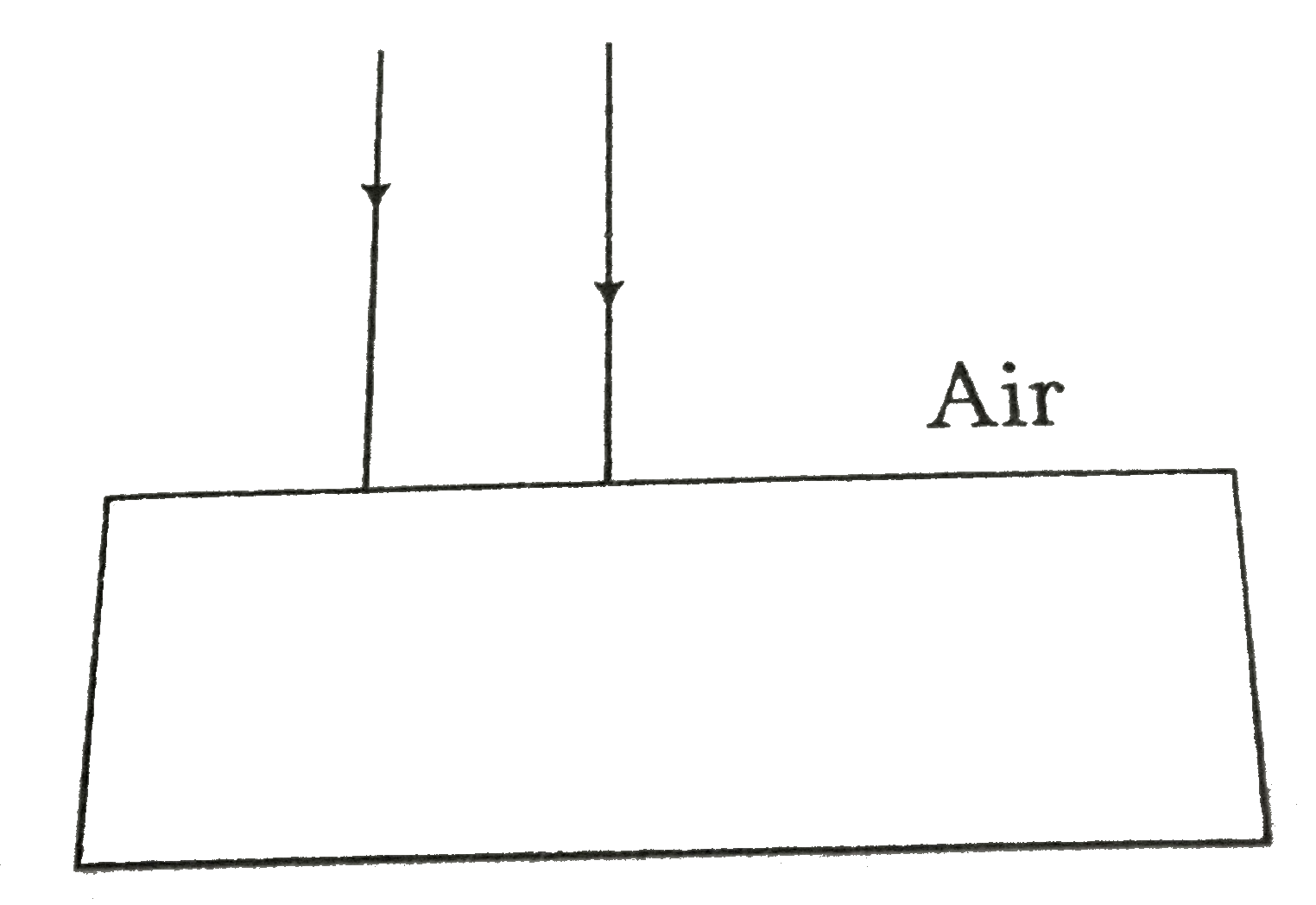When light gets polarised by reflection, the reflected beam is __ to the refracted beam .
perpendicular
Topper's Solved these Questions
Similar Questions
When light is polarised by reflection from a transparent surface.
a) reflection and refracted rays are mutually perpendicular
b) both reflected and refracted rays are plane polarised
c) refraction ray is partially polarised
d) the R.I., of transparent surface is equal to tangent of Brewster.s angle
View SolutionA beam of light travelling in water strikes a glass plate, which is also immersed in water. When the angle of incidence is 51∘, the reflected beam is found to be plane polarised . What is the refractive index of glass if the refractive index of water is 43? [tan51∘=1.235]
View Solution
Knowledge Check
A beam of light travelling in water strikes a glass plate, which is also immersed in water. When the angle of incidence is 51∘, the reflected beam is found to be plane polarised . What is the refractive index of glass if the refractive index of water is 43? [tan51∘=1.235]
A1.646B1.325C2.123D1.987The angle of incidence at which reflected light is totally polarised for reflection from air to glass (refractive index n) is
Asin−1(n)Bsin−1(1n)Ctan−1(1n)Dtan−1(n)A parallel beam of light of intensity I is incident on a glass plate. 25% of light is reflected in any reflection by upper surface and 50% of light is reflected by any reflection from lower surface. Rest is refracted The ratio of maximum to minimum intensity in interference region of reflected rays is
 A⎛⎜ ⎜⎝12+√3812−√38⎞⎟ ⎟⎠2B⎛⎜ ⎜⎝14+√3812−√38⎞⎟ ⎟⎠2C58DNone of these
A⎛⎜ ⎜⎝12+√3812−√38⎞⎟ ⎟⎠2B⎛⎜ ⎜⎝14+√3812−√38⎞⎟ ⎟⎠2C58DNone of these
Unpolarised light passes from a rarer into a denser medium. If the reflected and the refracted rays are mutually perpendicular, the reflected light is linearly polarised ___________ to the plane of incidence.
View SolutionA parallel beam of light of intensity I is incident on a glass plate. 25% of light is reflected in any reflection by upper surface and 50% of light is reflected by any reflection from lower surface. Rest is refracted The ratio of maximum to minimum intensity in interference region of reflected rays is

View SolutionA beam of light travelling with speed c in vacuum encounters a glass medium at an angle of incidence 60∘. If the speed of light in the medium is c√3, then the angle between the reflected and the refracted beams is :
View SolutionA beam of light travelling with speed c in vacuum encounters a glass medium at an angle of incidence 60∘. If the speed of light in the medium is c√3, then the angle between the reflected and the refracted beams is :
View SolutionAt polarising angle, the angle between reflected and refracted rays is
View Solution
